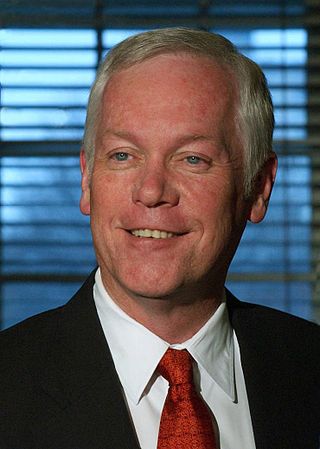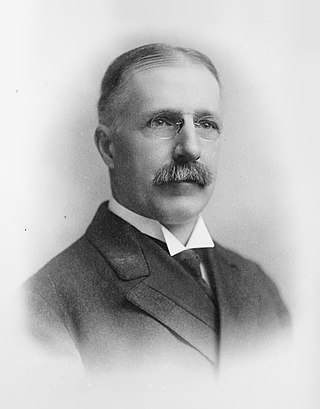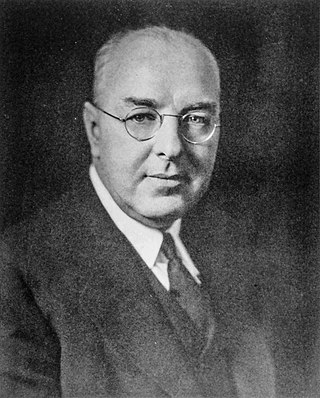The article's lead section may need to be rewritten.(August 2021) |
Related Research Articles

Alexander Meiklejohn was an English-born American philosopher, university administrator, educational reformer, and free-speech advocate, best known as president of Amherst College.

The Claremont Graduate University (CGU) is a private, all-graduate research university in Claremont, California. Founded in 1925, CGU is a member of the Claremont Colleges consortium which includes five undergraduate and two graduate institutions of higher education.
Francis Sheldon Hackney was an American educator, historian, and chairman of the National Endowment for the Humanities. He was president of Tulane University from 1975 to 1980 and president of the University of Pennsylvania from 1981 to 1993.

Nathaniel Davis was a career diplomat who served in the United States Foreign Service for 36 years. His final years were spent teaching at Harvey Mudd College, one of the Claremont Colleges.

Brian Christopher Mitchell is the president and managing principal of Academic Innovators. Prior to founding Academic Innovators, he served as president of Brian Mitchell & Associates, LLC. He was previously the president of Bucknell University, serving from 2004 until 2010. From 1998 through 2004, he served as president of Washington & Jefferson College. He is a nationally recognized expert in higher education, especially on private higher education.

Pembroke College in Brown University was the coordinate women's college for Brown University in Providence, Rhode Island. It was founded in 1891 and merged into Brown in 1971.
Societas Domi Pacificae, colloquially known as The Pacifica House or SDP, is a secret society based at Brown University, in Providence, Rhode Island, and is the oldest student secret society in the United States. Organized in 1824 as The Franklin Society, it was created in a year when such a large class entered Brown University that the two existing literary debating societies, the Philermenian Society and the United Brothers Society could not accommodate the new students. Notable personages such as Thomas Jefferson, John Quincy Adams, and Henry Clay accepted honorary membership into the society during this time. The society was founded with the motto: Scientia Potentia Est, meaning “Knowledge is Power.”

William Herbert Perry Faunce was an American Baptist clergyman and educator.

The Pembroke Center for Teaching and Research on Women was established in 1981 at Brown University, Providence, Rhode Island, as an interdisciplinary research center focused on gender and women. In addition to research, the center is home to archives of feminist theory and women's history as well as Brown's undergraduate Gender and Sexuality Studies concentration. Postcolonial theorist Leela Gandhi, is the Center's director, having assumed the position in July 2021.
Ray Lorenzo Heffner was an American educator and president of Brown University. He served in the United States Navy during World War II and graduated from Yale College in 1948, where he was elected to Phi Beta Kappa, the Elizabethan Club, and Scroll and Key. He earned his master's degree at Yale in 1950 and his Ph.D., also from Yale, in 1953 following the completion of a dissertation on the Elizabethan poet Michael Drayton.

Henry Merritt Wriston was an American educator, presidential advisor, and served as president at both Brown University and Lawrence University.

Samuel Milton Nabrit was an American marine biologist. He was the first African American to be awarded a doctoral degree from Brown University, the first Morehouse College graduate to earn a Ph.D. and the first African American appointed to the U.S. Atomic Energy Commission. He was also the first African American to serve on the Brown University Board of Trustees.
Walter Samuel Hunter contributed to psychology by leading an effort to develop psychology as a science. Hunter was one of the first scholars of the time to focus not on the study of subjective mental processes but rather on the observation of animal behavior. In 1912, Hunter completed his doctoral dissertation on Delayed Reaction in Animals and Children. He was a pioneer in the effort of scientific documentation, having created Psychological Abstracts in 1927, which contained documents from psychologists in the U.S. and abroad.
Lawrence Lazelle Durgin was a Congregational minister and social activist. He was dedicated to racial equality, and was known for his work on "urban and social issues" in New York City.
Henry Brayton Gardner was an American economist. He was a faculty member at Brown University from 1890 until 1928, serving as the first Eastman Professor of Political Economy from 1919 to 1928. In 1919, he served as president of the American Economic Association.
Adam Daniel Beittel was a minister, academic and supporter of civil rights. He was president of Talladega College from 1945 to 1952 and Tougaloo College from 1960 to 1964.
George Albert Owens was an American academic administrator and college president. He served as the 9th president of Tougaloo College in Mississippi serving from 1966 to 1984. He was the college's first African American president. He succeeded Adam D. Beittel who was removed from office after supporting civil rights activists. While in office he increased funding and campus housing.
References
- ↑ Mitchell, Martha. "Keeney, Barnaby (From Martha Mitchell's Encyclopedia Brunoniana)". Encyclopedia Brunoniana. Brown University. Retrieved 29 November 2012.
- ↑ "Claremont Graduate University (educational institution)". NNDB. Retrieved 29 November 2012.
- 1 2 "Archived copy". Archived from the original on 2008-11-27. Retrieved 2009-04-18.
{{cite web}}: CS1 maint: archived copy as title (link) - 1 2 3 4 Cerny, Danielle (22 September 2004). "Electric Keeney Acid Test: President Barnaby Keeney served the University and the CIA simultaneously during his tenure". The Brown Daily Herald. Retrieved 21 April 2015.
The full extent of his [Keeney's] involvement with the CIA was concealed during his presidency, and has never been fully disclosed.
- ↑ "Barnaby C. Keeney Quotes". Archived from the original on 2006-11-14. Retrieved 2009-04-18.
- 1 2 Li, Sophia (27 February 2009). "The East Side's Untold Story". Brown Daily Herald. Retrieved 21 April 2015.
- ↑ "Barnaby Conrad Keeney". American Academy of Arts & Sciences. Retrieved 2022-10-04.
- ↑ "Brown-Tougaloo Exchange records > Historical Note". Rhode Island Archival and Manuscript Collections Online (RIAMCO). Retrieved 6 September 2012.
- ↑ Dittmar, John (1995). Local People: The Struggle for Civil Rights in Mississippi (Blacks in the New World). University of Illinois Press. pp. 235–236. ISBN 978-0252065071.
- ↑ "Beittel, Adam".
- ↑ "Universities: New Blood for Brown". Time. January 28, 1966. Archived from the original on June 4, 2011. Retrieved April 26, 2010.
- ↑ "APS Member History". search.amphilsoc.org. Retrieved 2022-10-04.
- ↑ "NEH Timeline". About Us > History. National Endowment for the Humanities. Retrieved 6 September 2012.
- Mitchell, Martha (1993). "Keeney, Barnaby C.". Encyclopedia Brunoniana. Brown University Library. Retrieved February 12, 2007.
External links
Barnaby Keeney | |
|---|---|
| 12th President of Brown University | |
| In office 1955–1966 |